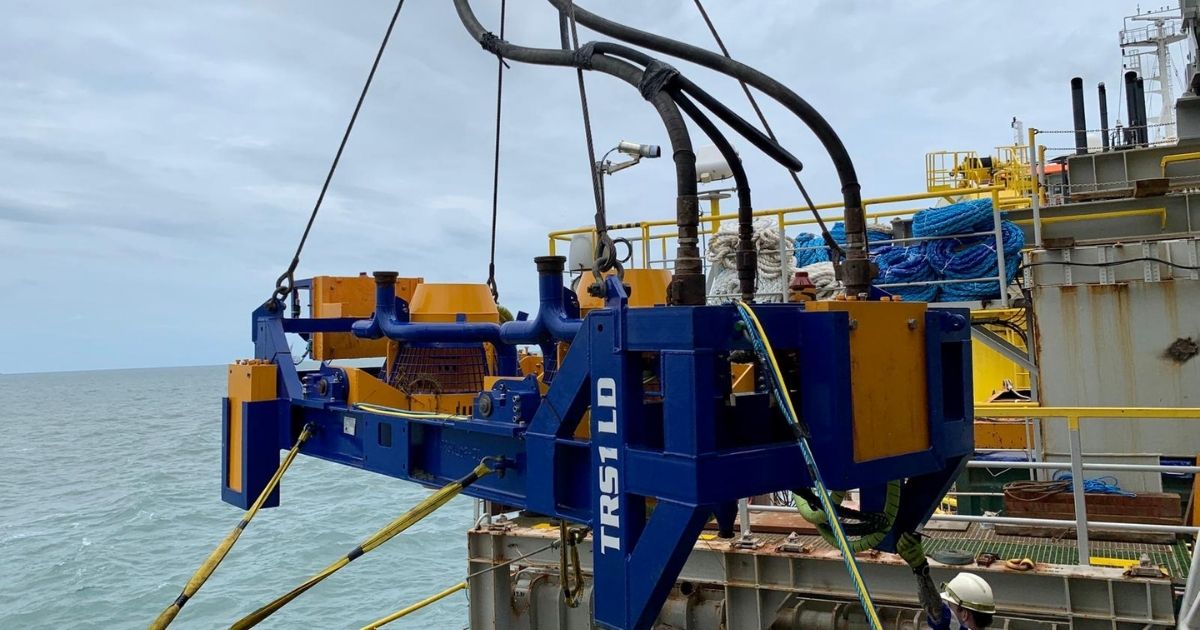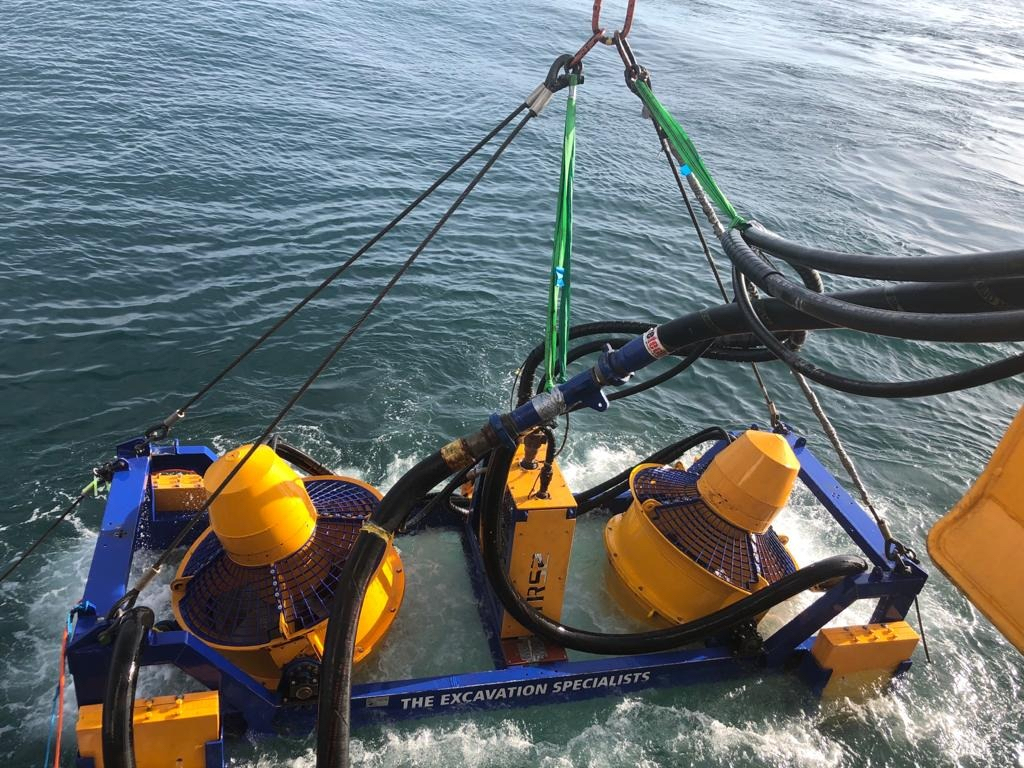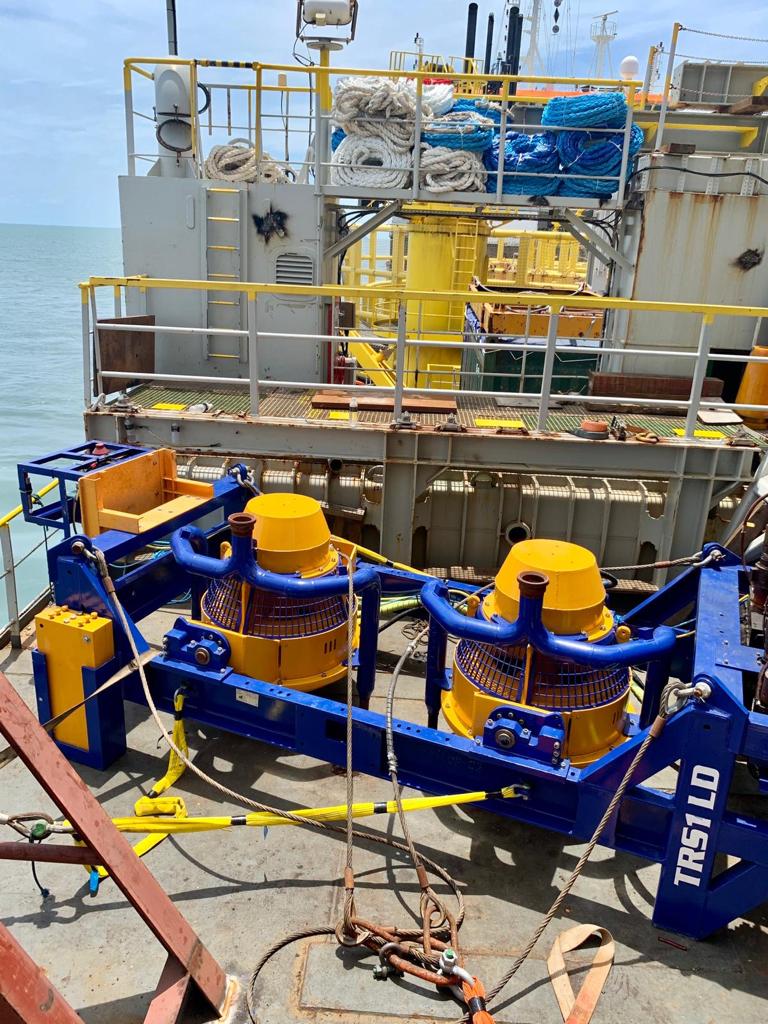Rotech Marks 5th Anniversary of Return to Sector in Asian Market

Subsea trenching and excavation pioneer, Rotech Subsea, is marking the fifth anniversary of its return to the sector with major project wins in Asia.
Two spreads of Rotech’s next generation controlled flow trenching and excavation technology were mobilized from Aberdeen to two separate projects offshore Taiwan, where the company completed vital infrastructure works on state-owned wind farms. Hot on the heels of the twin Taiwan contracts, Rotech Subsea mobilized again from its Aberdeen HQ on an umbilical post trenching scope offshore Melbourne, Australia.
 The Taiwan spreads consisted of Rotech’s state-of-the-art TRS2 controlled flow excavation (CFE) and TRS1-LD suspended jet trenching tools. The TRS2 completed a sandwave clearance for a new client won on the back of Rotech’s unrivalled European track record in renewables. At the same time, the TRS1-LD jet trencher carried out an inter-array and export cable trenching scope for a major long term tier one client on a neighboring field.
The Taiwan spreads consisted of Rotech’s state-of-the-art TRS2 controlled flow excavation (CFE) and TRS1-LD suspended jet trenching tools. The TRS2 completed a sandwave clearance for a new client won on the back of Rotech’s unrivalled European track record in renewables. At the same time, the TRS1-LD jet trencher carried out an inter-array and export cable trenching scope for a major long term tier one client on a neighboring field.
Both clients have kept the equipment on stand-by in the region to ensure its availability for second phases early in 2021. With the tools already securing further works in the region it looks like they will not be returning to the UK any time soon.
 No sooner had the initial Taiwan scopes been successfully wrapped than Rotech Subsea mobilized for Asia again, sending a team with its TRS1 tool on an umbilical post trenching scope offshore Melbourne. The mobilization saw the Aberdeen-based subsea trenching specialist have three spreads of equipment in Asia concurrently.
No sooner had the initial Taiwan scopes been successfully wrapped than Rotech Subsea mobilized for Asia again, sending a team with its TRS1 tool on an umbilical post trenching scope offshore Melbourne. The mobilization saw the Aberdeen-based subsea trenching specialist have three spreads of equipment in Asia concurrently.
“We were delighted to win our first major contract in Australia,” said Director of Subsea, Stephen Cochrane. “In common with the two Taiwan scopes of work our state-of-the-art tools were selected over other trenching tools already in the region due to the safe, non-contact method and productive trenching speeds.
“It’s a huge endorsement for us. Over the last few years, we have seen the RS range of Controlled Flow Excavation (CFE) and Suspended Jet Trenching tools become the ‘go to’ choice for IRM scopes. Due to our experience and performance in these scopes we are now seeing more and more that our Suspended Jet Trenchers are being chosen as a primary method for trenching, over other contact trenching systems and ploughs. Because of the enhanced capabilities of the RS tools, they can provide deeper and narrower trenches than ever before, with trenching speeds more than double that of competing Mass Flow Excavation tools.
“It was apposite that we mobilized for Taiwan as we were celebrating our fifth anniversary of returning to the sector. Rotech Subsea was essentially head-hunted and asked to mobilize from the UK for both scopes despite there being other older technology available to both clients in-country.
“We won, mobilized, managed and are executing these jobs in Asia while servicing the growing European and UK projects in renewables and oil and gas that we have going on at the same time.”
Rotech Subsea’s in-house research, development and engineering team has created a suite of 14 tools that has established Rotech Subsea as market leader in providing non-contact Controlled Flow Excavation (CFE), Suspended Jet Trenching technology and related subsea services. The dedicated in-house R&D team continue develop their technology, with further game changing enhancements to CFE due to be unveiled in 2021.
At capacity throughout pandemic
Against a backdrop of a global pandemic, Rotech Subsea, has continued to operate at capacity throughout the last nine months, servicing the burgeoning renewables sector in Europe and Asia. It is also teeing up delayed oil and gas projects while accessing new markets in home waters and overseas, including completing nationally vital port/logistics and alternative energy projects in the UK and as far afield as Bangladesh. Rotech Subsea recently demobbed from the country after successfully completing a seabed flattening scope for Max Group. Rotech’s TRS2 tool had been mobilized to carry out preparatory works for a new Government-backed nuclear energy facility.
During the UK lockdown, Rotech Subsea also successfully completed a critical quayside stress testing scope at Peel Port’s new deep-water container terminal at the Port of Liverpool. The company was contracted by BAM International to carry out the bespoke testing and monitoring project, which saw a customized TRS2 deployed to simulate bow thruster loads on the quay wall and the protective rock berm below. The port project adds to Rotech Subsea’s impressively varied track record in the sector.
“We are really happy to have continued to experience growth during what we thought could be extremely challenging times,” says Cochrane. “It’s a testament to the capabilities of our equipment and the dedication of our people. As we see the economy start to recover from the effects of the pandemic, we are already experiencing extremely high demand for our services well into 2021.”
Five years since return
As Rotech Subsea mobilized for Taiwan it was celebrating five successful years in the sector since its return following the 2011 sale of technology that took the sector by storm in the 1990s. Emerging from the ensuing non-compete period in 2015, the subsea excavation pioneer has gone from strength-to-strength.
“Five years on, the team now has over 500 successfully completed projects under its belt (a milestone passed in 2019), and a growing global client base in renewables, oil and gas, port/logistics and alternative energies,” said Cochrane. “Our in-house research, development and engineering team has created a suite of 14 tools that has established Rotech Subsea as market leader in providing non-contact Controlled Flow Excavation (CFE), Suspended Jet Trenching technology and related subsea services.”
Rotech Subsea’s patented RS technology provides capabilities not available through traditional mass flow excavation. They offer solutions in controlled flow trenching, excavation, burial / backfill, deburial and seabed debris clearance for: Cable array and export, trenching / deburial; Cable joint burial / IRM; Pipeline trenching / deburial; Backfilling for cable / pipeline protection; Jack-up leg / spud can clearance; UXO deburial / access; Freespan correction / seabed rectification; Harbour / pontoon seabed clearance; Sand wave clearance / cable and pipeline route clearance; Umbilical and flowline trenching / deburial; Salvage deburial / access; Access to subsea structures / IRM / decommissioning; Drill cuttings removal; Cable / pipeline umbilical recovery; Rock removal / relocation; and Rock dump dispersal.

